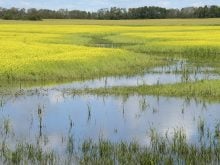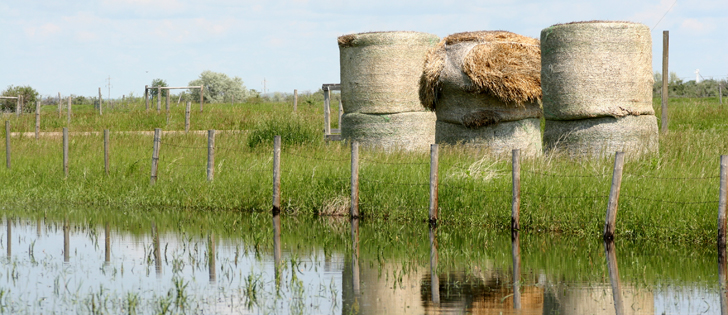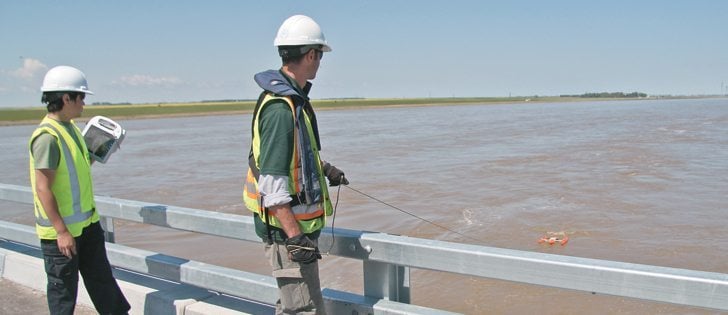Drought has been on the minds of many southern Albertans recently, yet memories of floods are also not far off as many communities break ground on a project to mitigate damages from excessive water.
The Horsefly Emergency Spillway is one of seven projects planned along the South Saskatchewan River basin that will attempt to keep overland flooding to a minimum and maximize the ability of irrigation infrastructure to divert excessive water accumulations.
The spillway came about because of the realization that using an irrigation system designed to conserve water for excessive water management has limitations. That became especially apparent following the floods that hit the region in 2010.
Read Also

Alberta researcher helps unlock the economics of farming
Lethbridge Polytechnic researcher helping agriculture producers with decision-making tools in economic feasibility
That flood, which was caused by high runoffs from the Cypress Hills, resulted in the Southern Regional Stormwater Drainage Committee being launched in 2012 to deal with the potential threats of overland flooding to the area’s burgeoning agricultural corridor running between Lethbridge and Medicine Hat.
The need was further amplified by the flooding from the Oldman, Bow and South Saskatchewan rivers in 2013 and again in 2018 when ice jammed many of the St. Mary’s River Irrigation District canals.
“This is a project that has been 12 years in the making from when the first discussions took place as to who is responsible for these overland flooding and drainage problems,” said Merrill Harris, Municipal District of Taber reeve and co-chair of the SRSDC.
The Horsefly Emergency Spillway will allow six times more overland flood water and storm water runoff to be diverted using SMRID’s main canal.
The originally planned $22 million first phase of the project funded jointly by the federal, provincial and municipal governments has had its problems, however, with the spillway’s costs now being pegged at $25 million.
That cost is expected to rise as well for the remaining two phases of the spillway project.
“We’re all working on trying to make up the difference that inflation has caused over the last five years,” said Harris.
But he added there is a strong desire from all the communities to see the project through and avoid repeating going through another flood event and expressed confidence that effort will be repeated to address funding shortfalls.
“It’s taken a lot of work, a lot of co-operation between all the municipalities,” said Harris, who added it was originally a tough sell. “But if we were to lose the main canal for a season, which almost happened in 2013 when the main canal south of Grassy Lake was just about overflowing, the economic impact if we lost that main canal for a season or part of a season would be humongous. So, the price tag of this would be a small little thing in relation to what we might lose if we lost the main canal for a year.”
The SMRID provides enough water to irrigate 495,000 acres of farmland and the specialty crops they produce, which in turn supports more than 200 agri-food industries along Highway 3 between Lethbridge and Medicine Hat.
Both the number of irrigated acres and agri-food industries are expected to grow in the coming years.
“My thought has always been what would we look like if we didn’t do the project and we had overland flooding that actually wiped out the main canal for a season. Then we’d look pretty silly for not having done it,” said Harris.
The Sauder Spillway west of Medicine Hat and upgrades to the Chin Reservoir — two of the seven projects as part of the regional initiative — are in the process of being upgraded as part of SMRID’s efforts to beef up flood protection that involves the seven projects.
SMRID general manager David Westwood said he doesn’t believe the last several years of dry or normal precipitation will cause support for the projects to wane.
“I think people can remember we’ve had enough flooding events that it’s not so rare, that it doesn’t happen,” he said. “Our planned Chin expansion is another flood mitigation strategy and, obviously, drought mitigation strategy. That’s really going to take a lot of pressure off if we were going to have excessive precipitation and increase the volume we’ll be able to store.”
Rounding out the projects are a Sherburne Reservoir expansion and spillway, converting gravity drain inlets on the SMRID main canal to pumped inlets, as well as expansion of the Murray Reservoir and construction of a Paradise Creek dry dam.
The total estimated cost of all seven regional stormwater projects is $170 million, with construction taking place over the next 25 years.
















